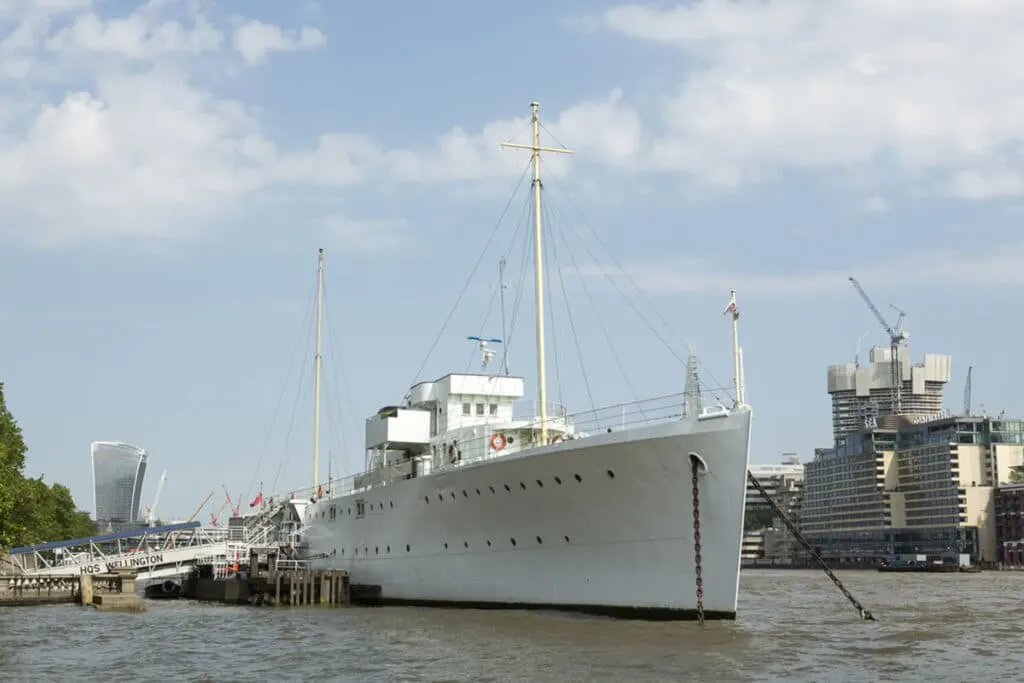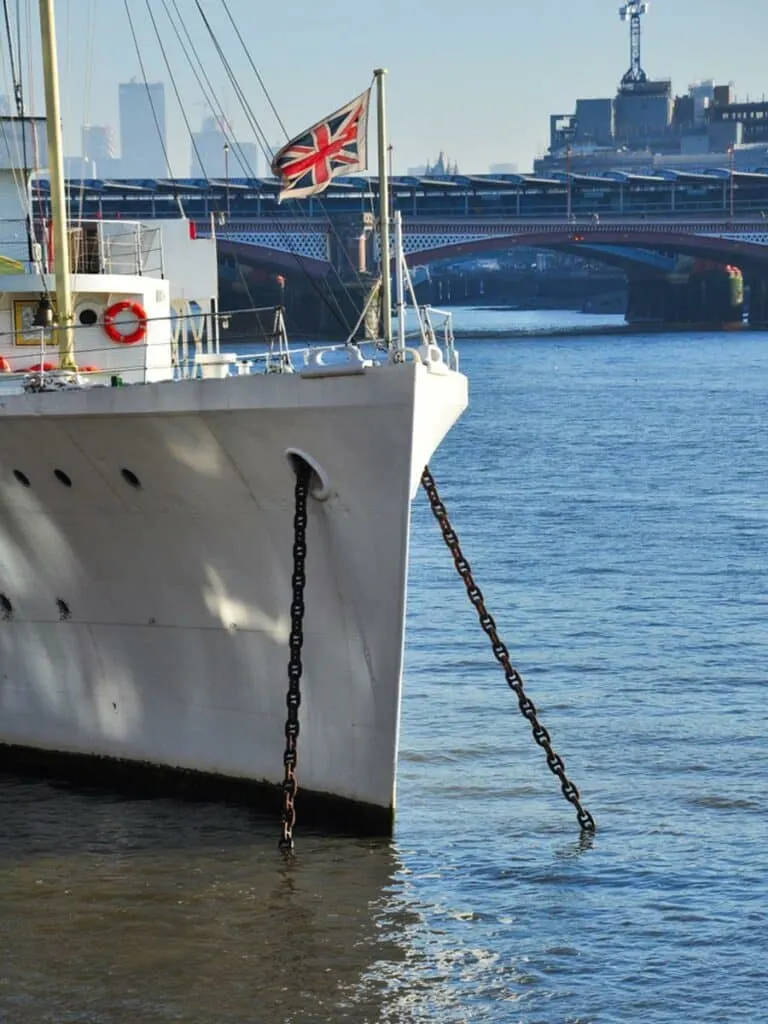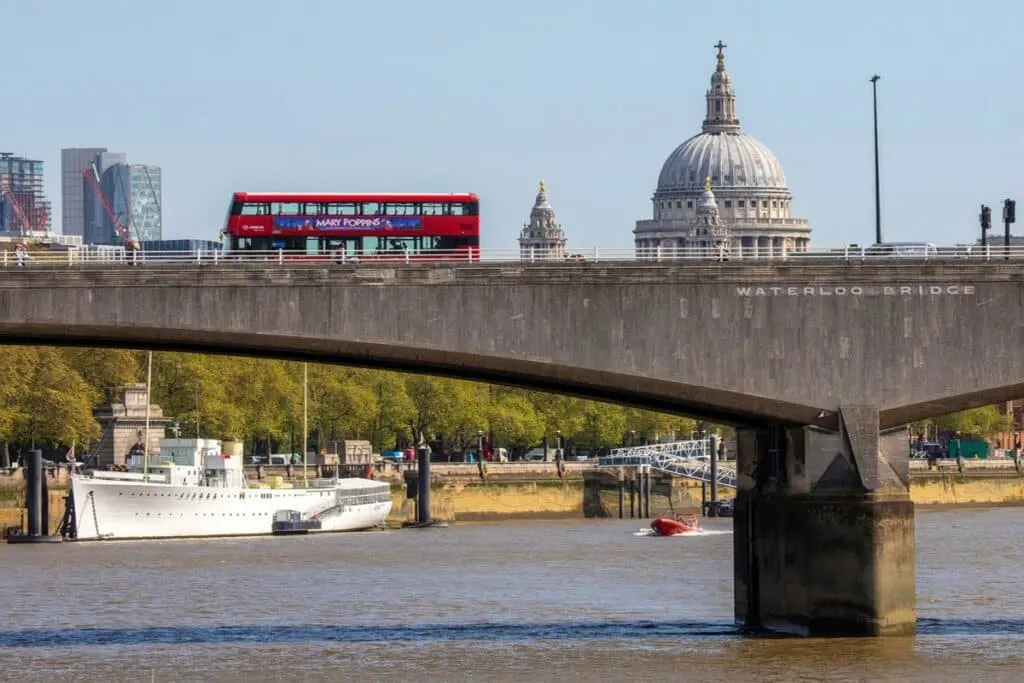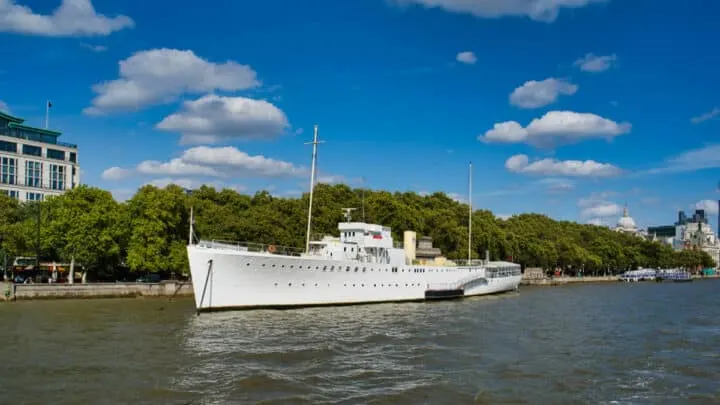The history of one of London’s riverside ships, how it got there and the century-old society it’s home to. It’s time to discover the hidden secrets of HQS Wellington.
If you’ve ever walked along Victoria Embankment, and we’re guessing most of you have, you may have spotted a fairly large, military-looking ship gleaming white by the bank.
That’s the HQS Wellington. A Grimsby class sloop turned livery hall with a colourful past.
But what’s a sloop? And a livery hall for that matter?
Fear not – it’s all wrapped up in the history of the HQS Wellington.
Why Visit HQS Wellington?

For a slice of history. The ship served in the Second World War, and is quite unique in its current function. Anyway, aren’t you curious about that big ship moored on the banks of the Thames?
Today the HQS Wellington is docked at Victoria Embankment and available for public visitation. She also serves as a livery hall or meeting place for the Honourable Company of Master Mariners – the only floating livery hall around.
The History of HQS Wellington

First of all, we’re going to have to get into some terminology. The HMS Wellington, as it was named when it was built, is a Grimsby-class sloop.
Originally, the word sloop would have referred to a one-masted sailing ship. But by 1934, when the Wellington was launched, it had come to refer to a small anti-submarine warship.
And so, it’s from this we gleam the first bit of info about our boat here. She was used for war. And if you paid attention to the date she launched, it should be clear she had quite a time coming up.
But first, how did she fare in peace?
Before World War II
HMS Wellington was sent to New Zealand in 1935. Her mission: Patrol British Protectorates in the South Pacific.
These were small islands that made up the far-flung parts of the Empire on which the sun was never to set. The Wellington = a symbol of the power that empire held.
The islands, of which about 500 were inhabited, were scattered across eight million square miles of ocean stretching from China to the islands south of New Zealand.
The Second World War
By 1939 things were looking tense in Europe. On the day of the outbreak of war the HMS Wellington was recalled to Britain and fitted with anti-aircraft guns and anti-submarine depth chargers.
Passing the gulf of Aden, she was redirected to Freetown, Sierra Leone for her first mission: convoy protection.
During the war, Britain relied heavily on military, food, and medicinal supplies from the colonies and America. With German submarines blockading the British isles, getting these ships through was difficult; they required massive convoys under naval protection.
The Wellington carried out this duty throughout the war, in part for the West Africa Command, and to the latter end of the conflict, in Gibraltar.
During wartime, the Wellington was key to saving the lives of torpedoed sailors on three occasions, and once even sank a U-boat herself.
Arguably Wellington’s boldest moment was her involvement in Operation Cycle – a mission at the tail end of the evacuation of Dunkirk.
She was sent to rescue the 51st Highlanders at St. Valery, 30 miles northeast of Le Havre. Unfortunately, her mission was hampered by bad weather conditions and she couldn’t get all the Highlanders off the beaches.
Post World War II + Today

With the war over and the navy having little use for old battleships, the HMS Wellington was put into the reserve fleet and left to rust on a mud bed in Milford Haven.
Have no fear though, folks – a few years later she was to be rescued. The people behind it were the Honourable Company of Master Mariners – a livery company that enforces standards of practise on seafaring business.
The history of livery companies actually goes all the way back to the middle ages. You can think of them like guilds. They’d look after the training of new craftsmen and decide who could work in the industry, as well as functioning something like a rudimentary union.
The livery company was just one benefactor in a round of funding that had the HMS Wellington converted into the HQS Wellington, meaning Headquarters Ship.
This change in status came with the installation of a grand wooden staircase that you can still see today if you visit.
HQS Wellington: Practical Information
Address: Temple Stairs, Victoria Embankment, London WC2R 2PN
Opening Times: At the time of writing the HQS Wellington is closed to the public. It will reopen in April 2023 with private tours available on Sundays
Tickets: TBC

